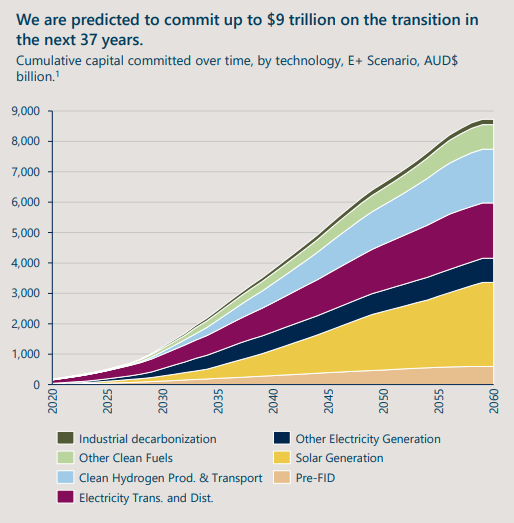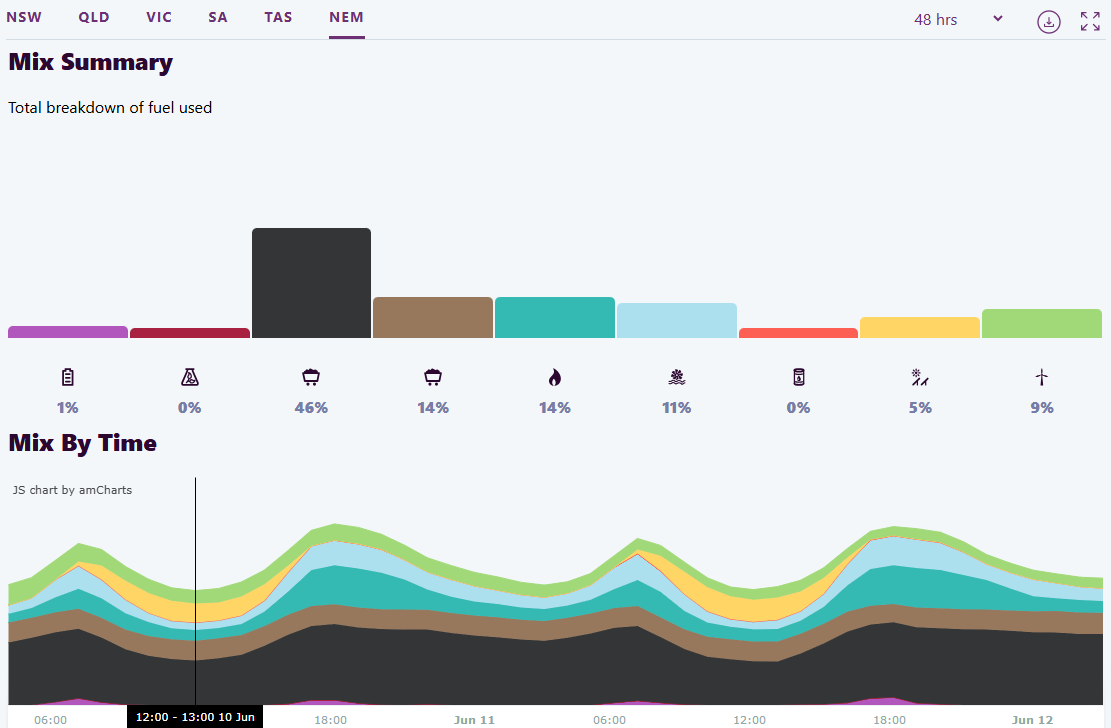Anybody who believes that meeting Labor’s 82% Renewable Energy Target (RET) by 2030 is achievable or affordable is delusional.
To achieve Labor’s fantastical target, most of Australia’s baseload coal generation—the backbone of the nation’s electricity grid—would need to be shut down and replaced with intermittent and weather-dependent wind and solar generation, backed up with battery and pumped hydro storage.
Even if the RET were achievable, the costs of getting there would be ginormous.
A July 2023 report from Net Zero Australia (University of Melbourne, the University of Queensland, Princeton University and management consultancies Nous and Evolved Energy) put the cost at $1.5 trillion by the end of the decade, with the need for $7 trillion to $9 trillion of capital by 2060 to meet Australia’s aspiration of net zero by 2050.

Source: Net Zero Australia
Much of this projected cost relates to the massive amounts of storage required to offset the inherent intermittancy of wind and solar:

Source: Net Zero Australia
The intermittency of renewable energy is especially acute in winter when solar generation is low and there are often long periods of low wind.
For instance, Eastern Australia last week experienced a “wind drought”, which saw wind power generation collapse.
Wind and solar contributed just 3% of electricity generation and batteries only 2% at 7.50pm on Thursday. Meanwhile, coal (54%) and gas (23%) contributed 77% of NEM electricity generation:

NEM electricity generation sources (12 June 2025, 7.50pm)
Over the 48 hours between June 11 and 12, 2025, wind (9%) and solar (5%) produced only 14% of the East Coast’s electricity over the two-day period, with battery storage contributing only 1%.
By contrast, fossil fuels—coal (60%) and gas (14%)—contributed 74% of the East Coast’s electricity generation over the 48-hour period.

NEM electricity generation sources (11-12 June 2025)
The Snowy Hydro 2.0 pumped hydro project is a microcosm of the cost and challenge required to meet the fantasy ‘net zero’ target.
Snow Hydro 2.0 plans to use excess renewable energy created during the day (mostly solar) to pump water up to an elevated reservoir, which is subsequently released at night to provide hydroelectricity when solar is not available.
The price tag of Snowy Hydro 2.0 has escalated dramatically. The former Turnbull Coalition government announced that the project would cost $2 billion and be completed by 2021. The government raised the cost to $6 billion, then $12 billion.
Problems persist, with Snowy Hydro 2.0 still under construction and running years behind schedule.
Underground construction was interrupted in February 2025 after an industrial-sized ventilation fan collapsed, releasing shrapnel into the air.
Workers on the project have threatened strike action, requesting a salary increase of more than 30% over four years, a 15% superannuation contribution, and a variety of additional benefits.
The fly-in, fly-out employees on Snowy Hydro 2.0 already earn more than $200,000 annually and want an upfront payment to bring workers into line with tunnel wage rates in Melbourne, where an entry-level tunneller can be paid $230,000 annually and more experienced tunnellers earn more than $300,000 a year.
Last week, the workers threatened five straight days of strikes, only to pause action for two weeks following intervention from the Fair Work Commission.
Thus, the sky is the limit for how much Snowy Hydro 2.0 will ultimately cost.
To add salt to wounds, Snowy Hydro 2.0 will be linked to the 365-kilometer HumeLink in south-west New South Wales. This ‘green’ project is also behind schedule, and the estimated cost has risen to about $5 billion.
The estimated cost of the 2,000-megawatt QLD Borumba Pumped Hydro project has also risen by $4.2 billion to $18.4 billion, with completion not expected until 2033 at the earliest. As with Snow Hydro 2.0, the costs will probably rise further.
Snowy Hydro 2.0 and Borumba are mere microcosms of the staggering costs of the renewable ‘revolution’.
Pumped hydroelectric projects do not produce any net power. They simply act as storage vehicles for excess renewable energy generation (mostly solar) in the middle of the day.
Battery storage and the distributed network of solar and wind generators strewn throughout the countryside are equally costly.
Weather-dependent energy is inherently unreliable. It is also extremely expensive due to the large infrastructure, transmission, and storage requirements, as well as the need to have dispatchable hydrocarbon generators on standby for when wind and solar power inevitably fail.
As a result, consumers will pay higher energy costs both directly on their bills and indirectly through taxes to support renewable energy subsidies.
Policymakers should stop gaslighting and be open about the costs and trade-offs of Australia’s renewable energy transition.

